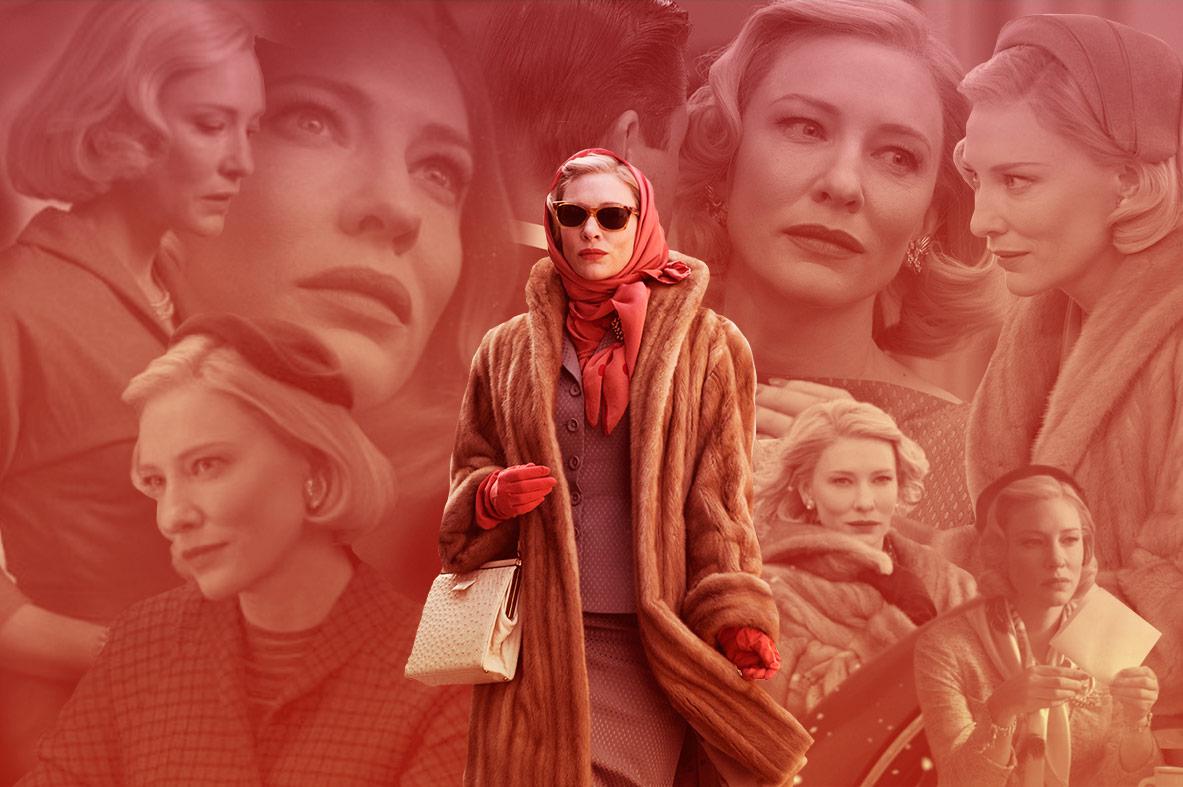According to a new ranking out this week from the British Film Institute, Carol—the critically acclaimed Todd Haynes film from 2015 that should have won the Oscar but wasn’t even nominated for Best Picture—is the best LGBT film of all time. The ravishing 1950s lesbian love story rounded out a top five including Andrew Haigh’s moody hookup Weekend, Wong Kar-Wai’s Hong Kong romance Happy Together, cowboy melodrama Brokeback Mountain, and Jenny Livingston’s seminal ball scene documentary (and codifier of, like, half of gay slang) Paris Is Burning. The full list, presented in honor of the BFI Flare film festival’s 30th anniversary, was compiled by combining the individual top-10 picks of over 100 film academics, critics, and festival programmers.
Now, I’m on the record as thinking, along with many others, that Carol was the best queer film of 2015. (Some mornings I wake up with the notion that the ladies of Tangerine actually deserved the praise more than Cate Blanchett; alas, the headline “Why Carol Is the Best Queer Movie of the Year” is already written.) But is it really the best queer film of all time? I mean, for all its beauty and insight into the queer experience, Carol has only existed in the world for a handful of months—can we really call it the best we’ve got so soon?
I’d resist that conclusion, and not just due to the unavoidable bias tied to Carol being still fresh in the minds of those polled. It may well deserve to be in the top five or ten of such a list; but before I would sign off on that personally, I’d want to think through how the exercise of list-making might be more complicated for LGBT film than for other categories.
For one thing, we need to define what we mean by “LGBT film.” If it means movies featuring or largely about LGBT people or issues—in other words, explicit about their queerness—your choices are going to be necessarily limited by number and era (with many more titles appearing from the ‘70s on).
Also, if the larger BFI list is any indication, it’s going to be constrained by genre. Though there are exceptions, explicit LGBT film is still in a phase of simply representing queer people’s basic existence—with a focus on achieving self-knowledge and social visibility (the coming out story) or on romantic/sexual relationships. (A film like Tangerine feels so novel because it avoids both categories—the trans women at its center are fine with their identities and the relationship that sets them off on their L.A. odyssey is more farcical plot device than emotional core.) To be fair, LGBT takes on drama and romance have grown in sophistication over time, and those genres are far from exhausted. It’s just that non-queer lists have the range of cinematic storytelling to choose from. Considering that, it may be a bit too soon for queer cinephiles to be thinking in terms of “all time” in the first place.
The literal interpretation of “LGBT film” also seems weirdly out-of-touch with how LGBT folks have historically dealt with cinema. Recall that queer people have a long and impressive history of extracting queer meaning from “straight” films, whether by projecting their lives into heteronormative romances and melodramas or undermining straight moral seriousness with camp sensibility. While the BFI list doesn’t totally ignore this phenomenon—Auntie Mame, that classic of intentional camp, was included on one ballot, thank the goddess—it is largely concerned with instances of literal representation. How can any “all time” LGBT list call itself legit without the muted pastels of Douglas Sirk (on which Todd Haynes so often draws!) or the bitter outsider’s eye on straight life behind Who’s Afraid of Virginia Woolf? Those are just off the top of my head; many other films that are not literally queer and yet historically important to the queer experience should be on such a list.
Of course, critical exercises like this ranking are just that: exercises. They’re certainly not binding, and they’re wholly limited by the subjective judgments of those asked to contribute. It’s probably best to view them as convenient guides for the next time you’re searching for something to watch. Still, canon-making is a powerful act. It’s exciting to be at a moment in history where queer people can seriously begin that process with film, but as we embark upon it, we should remember that canons are only as valuable as the assumptions upon which they’re built.
